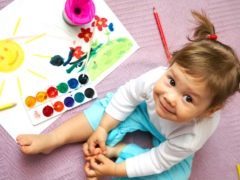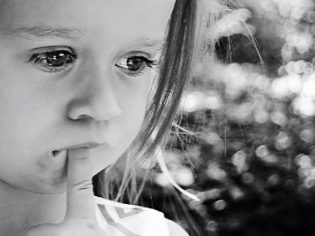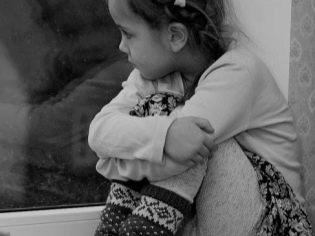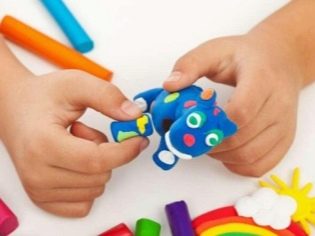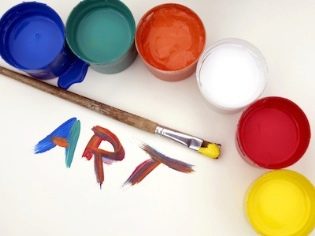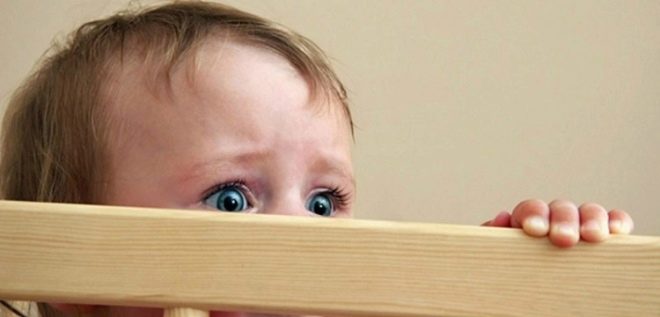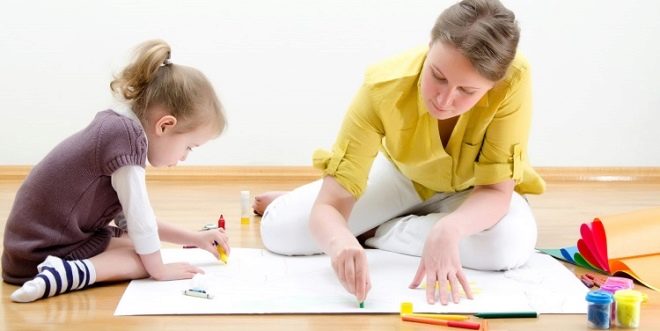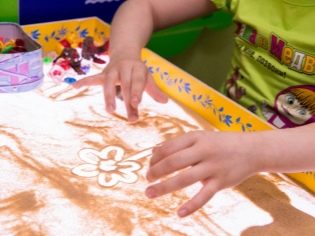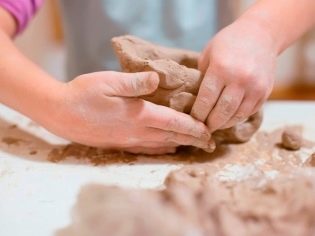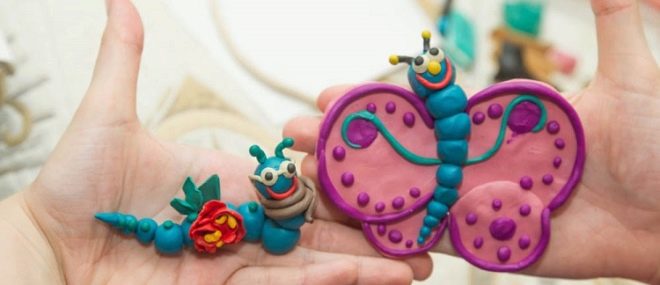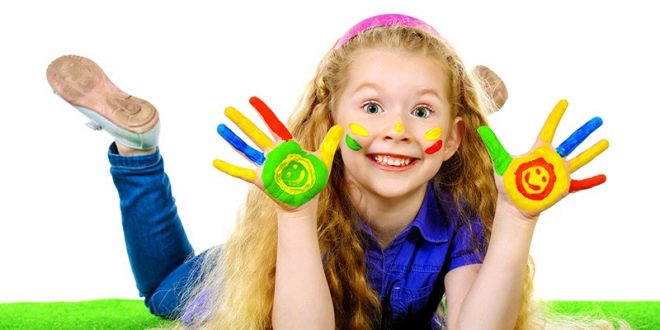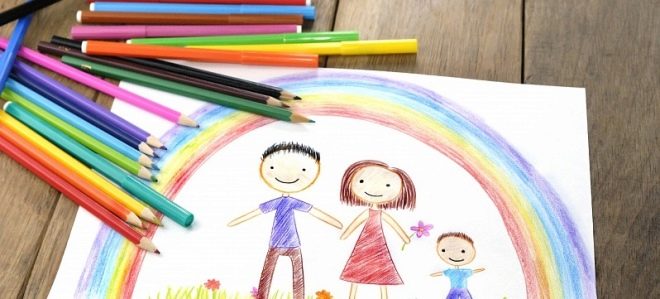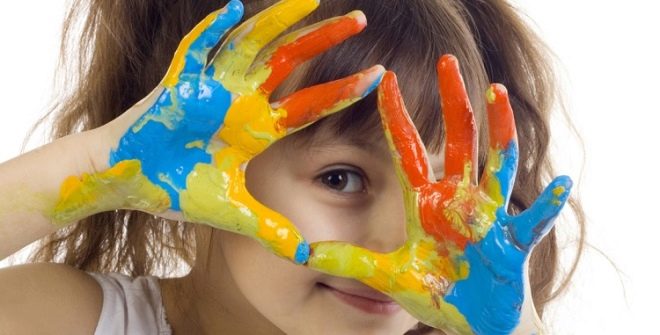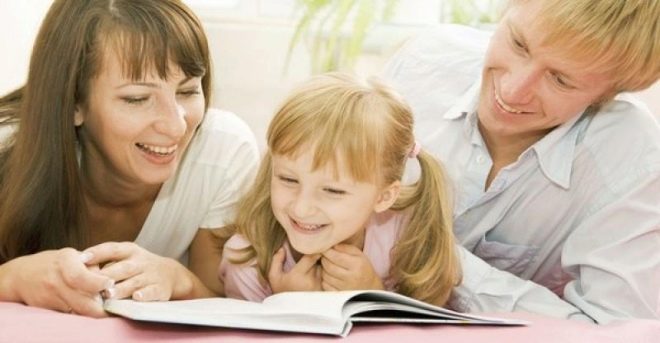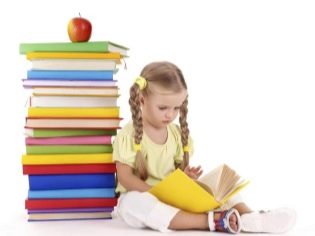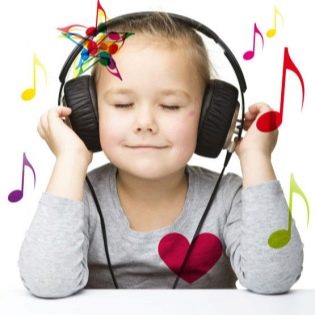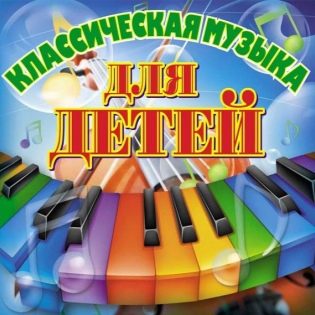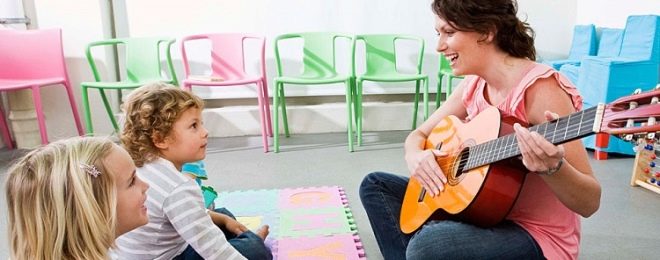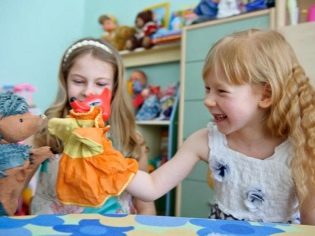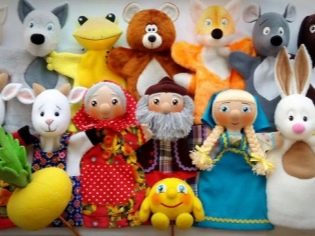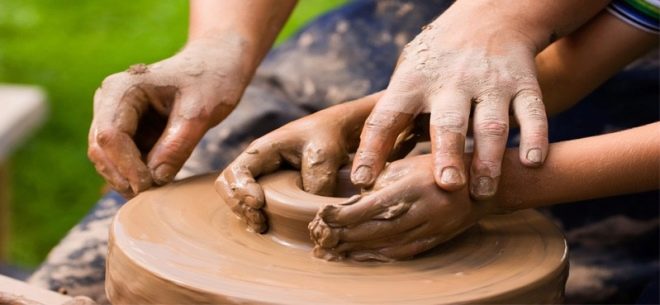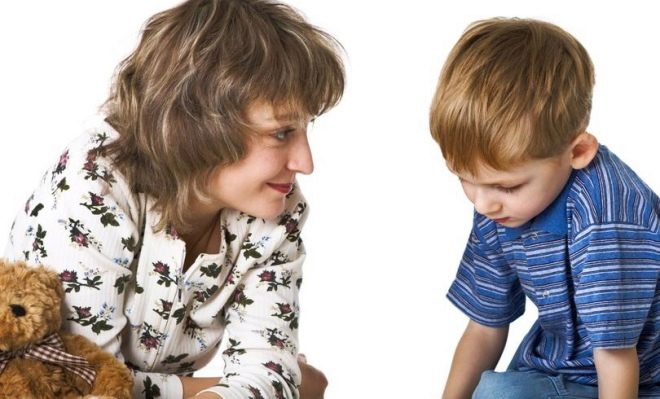Art therapy for children: we treat with art
It is no secret that many diseases in adults and children are closely related to psychological aspects. And without addressing the root causes, the prerequisites that formed the basis of the disease, it is rather difficult to cure a person. To identify the hidden psychological factors of the disease and to help a child who has health problems, there is a method such as art therapy. That it represents itself and whether it is effective, we will tell in this article.
What it is?
Art therapy includes many methods of influencing the psyche and the emotional sphere of a child with art, creativity, creation of beauty. Art therapy classes are widely used by child psychologists, psychotherapists, psychiatrists, as well as social educators and rehabilitators.
Through understandable and simple actions that constitute the essence of the method — drawing, dancing, music, sculpting, etc. — the child can discover the hidden corners of his soul, express anxiety and excitement, which are not always due to age or other factors to be expressed in words.
The art therapy exercises have received widespread use in diagnostics: a psychologist or psychotherapist can very well determine the causes of his anxiety and even his illness as a result of children's creativity. Art therapy is quite successfully used in the treatment and correction of disorders of the emotional sphere, neurasthenia, post-stress disorders, personality disorders of the child, and some mental illnesses.
Exciting activities help social educators in rehabilitating difficult adolescents, children in difficult life circumstances. Teachers use the exercises and some methods of this type of therapy in classes with children of preschool age, because they contribute to a more harmonious development of the personality. Art therapy in the rehabilitation of disabled children is quite effective. The results of such a “treatment”, to which children go with great pleasure and enthusiasm, sometimes surpass the results of traditional medical and physiotherapeutic therapies.
Official medicine has long accepted and recognized these methods, thanks to which art therapy is often included in the general combined course of treatment. Accessibility and simplicity of the methods give parents additional opportunities: even if there is not a single art therapist for the entire locality, mothers and fathers can easily master the basic methods and types of art therapy on their own and work with the child at home.
Art-Terpy has a rich past. The first term was invented by the artist Adrian Hill, it happened in 1938. He successfully applied some methods and methods when working with patients at the tuberculosis center. Then the techniques were adopted by American psychologists. They were mainly used for the rehabilitation of children with disabilities (disabilities).
The most amazing results were achieved in work with children and adolescents who were taken out of fascist concentration camps during the Second World War. The world's first professional Art Therapists Association was established in the United States in 1960.
Indications
Art therapy is recommended for a large circle of children and adolescents of various age categories.There are no contraindications to it, so anyone can engage, such therapy is not capable of harming the psyche and health of the little patient.
But paramount methods and types of art treatment are recommended:
- children who demonstrate difficulty in expressing feelings and emotions (capricious, hysterical, withdrawn and shy children);
- children who have experienced severe stress;
- depressed children:
- emotionally unstable guys;
- adopted children who may experience a sense of their own "uselessness", rejection by the world;
- children and adolescents who are in conflict with their parents and peers;
- children in whose families an unfriendly and psychologically unfavorable situation reigns, as well as children from single-parent families;
- children suffering from various phobias;
- children with autism;
- children with disabilities from birth (cerebral palsy, etc.);
- children who are disabled as a result of illness or injury at a conscious age;
- children with low self-esteem;
- children with disorders of the central nervous system, with delayed speech and psychomotor development);
- anxious and hyperactive guys.
You can practice from a very early age, some methods are even suitable for children up to a year. Parents will also benefit from the lessons, since the main methods are also effective for adults. So joint classes are welcome.
Kinds
The art, from which the treatment method takes its name, is multifaceted, therefore there are quite a few types of art treatment. The main methods are as follows.
- Isotherapy (drawing treatment) - is widely used to diagnose psychological trauma in a child, the complexities of adolescence, and shy and secretive children.
- Bibliotherapy (treatment with a book) - The most famous subspecies of this method is fairy therapy, used for children of primary and school age.
- Music therapy (music treatment) - a method that is rarely used for diagnostic purposes, but is widely and quite successfully used to relieve increased anxiety, emancipation and relaxation. It is often used to correct the psychological state of babies and teenagers with impaired visual functions.
- Dramatherapy (treatment by joining a theater act) - The method shows itself well in working with anxious and overly emotional boys and girls.
- Kukloterapiya (treatment by puppet theater) - the method is designed specifically for classes with children who have speech, autism spectrum disorders, post-stress disorders.
- Dance Therapy (Dance Exposure) - a treatment that has proven itself in solving the problems of squeezed and secretive children, children suffering from mental retardation (mental retardation).
- Sand therapy (manipulations with sand and small figures) - method of analytical psychotherapy. It is used in traditional psychiatry for the diagnosis of certain disorders of perception. Such lessons are especially effective for autistic children and toddlers who have experienced serious psychological trauma and violence.
- Clay therapy (treatment by molding) - This method is a type of isotherapy, but has several advantages: during modeling, the nerve endings are stimulated on the fingertips and on the palms. It is this that gives positive results in the correction of conditions in children with disorders of the central nervous system, vision, hearing, enuresis and other pathologies.
Today, related types of art therapy are becoming popular, and they appear as technology develops naturally. So, in recent years, phototherapy is gaining momentum - a method that is used for adolescent children, especially for the so-called "difficult" children.
Creating photos, choosing angles and composition of the frame, children open up, become more understandable for an adult (parent, psychologist).Understanding the motives and problems of a particular little man allows an adult to find the only true "key" to the behavior and actions of the child.
Goals
Only at first glance, a skeptical adult drawing or modeling from clay does not solve the main problem of the child, if he has an incurable disease or he is a victim of psychological violence. In fact, the processes that occur during an art therapy lesson, although not visible visually, are of great importance for the rehabilitation of a child.
First of all, art therapy allows the child to throw out all negative internal emotions that often cause illness (fear, anger, irritation, intolerance, rejection of the world). After transferring these emotions to a piece of paper, a piece of clay, to a dance-motor activity or to a photograph, the child is relieved, and a psychologist or psychosomat specialist is able to identify the disturbing factors, problems and misfortunes of the little man to find a way to solve them.
Official sources of the encyclopedic properties explain the effect of art-therapy by the process of sublimation - it is the transfer of the contents of the inner world to the outside that allows the child to get rid of the negative or horror that settled in it, and begin to perceive the world differently.
As an auxiliary technique, art therapy has proven itself in the medical practice of psychiatrists and psychotherapists. Teaching a child to draw or dance allows an adult to quickly establish contact even with the most uncommunicative and reticent child.
It has been proven that even one course of art therapy enhances children's self-esteem, develops self-control in a child, instills a good habit of analyzing and understanding one's own feelings and emotions, and also develops the creative abilities that, as you know, every person on Earth has absolutely.
Characteristics of species - how to do?
Certain types of art therapy require separate explanations, since many parents would like to try out such activities with their children. Let's take a closer look at some of the species.
Isotherapy
There are no children in the world who would not like to draw, and therefore this method is considered the most accessible and common. The method is passive and active. In the first case, parents will have to drive a child to an art gallery or show reproductions of famous canvases at home, telling what is depicted on them, why and how. It is necessary to discuss a picture with the child, give oral characteristics to the characters and the plot.
Passive isotherapy is not suitable for very young children who are not yet able to formulate thoughts, as well as for children for whom identification of visual images is difficult (visually impaired and blind). It is unlikely that this method will be interesting for teenagers.
Active isotherapy is the drawing process itself. It uses several techniques. For a child of any age, suitable so-called projective isotherapy, in which you can afford to carry on paper dreams, goals, plans, fears and discomfort. Tasks for such drawings can be any, as long as the child during the drawing could imagine the situation with reference to himself: “I am in the future”, “How I spent the day”, etc.
Personal isotherapy allows you to work mainly with children of primary school age and older. The point is to allow the child to put his stress into the drawing, thereby freeing himself from it. To do this, given the task to create a drawing on a free theme. Unlimited subjects, the student will immediately begin to portray exactly what worries him most.
For children who have experienced stress, fears can use the technique "Draw your horror." Actually, this is the theme of the picture. It is not surprising that a child uses black and red colors, sharp corners, and incomprehensible shapes.The more aggressive the drawing, the better.
There is a category of children and teenagers who do not want to draw. For them, specially created special coloring-anti-stress. A large number of small parts that need to be colored will help calm down, concentrate, relax.
If the mother decided to engage in isotherapy with the child, it should be understood that each pictorial "masterpiece" should be discussed with her son or daughter, try to make the child tell what is depicted and why he personally relates to what he has depicted. To help beginners, you can recommend to read the book E. Colorful Svistunova "Colorful childhood" or the book Armine Voronova "Art therapy for children and their parents."
Bibliotherapy
Healing with the word shows excellent results for children of different ages. In psychotherapy, fables, tales and stories are most often used. For children, fairytale therapy is more popular. Listening to a fairy tale or fable, the kid can associate himself with one or another hero of the story. He gets a rare opportunity to experience a variety of fears, to go through various trials without going through them in reality. The child will survive all stressful situations in his imagination.
Treatment with a book is very useful for children with mental and speech developmental delay. It enriches their ideas about the world, stimulates intellectual abilities, allows them to find their place in society, and also gives an idea of how to get out of difficult situations, following the example of their beloved heroes.
This method is suitable for children of the younger, preschool and primary school age. For adolescents, there are more complex techniques - analysis and discussion of serious literary works of larger forms.
Parents who would like to practice fairy tale therapy should pay attention to Russian folk tales with simple and understandable subjects. It is also recommended to read the manual of the group of authors Prokhorov, Rubanova and Otradnova “The healing power of a fairy tale - fairy-tale therapy for adults and children”.
Music therapy
Everyone knows about the wonderful properties of good music. Some mothers include classical music not only to their small children, but also to unborn babies, during pregnancy. Indeed, the harmonic effect of sounds on the human cerebral cortex is difficult to overestimate.
For children of preschool and school age active music therapy is available. For babies - mainly receptive music therapy. The method of listening to musical composition is called receptive, and the method of independent music playing on musical instruments is called active.
Classical melodies are suitable for passive listening, most often in psychotherapy they use the music of Bach, Mozart, Vivaldi. It is full of emotions and allows the child to associate their own feelings with sounds and harmony (sadness, joy, waiting for something).
For teenagers and middle school students, you can use special musical compositions for relaxation and meditation.
Mom at home can practice music therapy as a companion method when practicing drawing, modeling, dancing. Soft and unobtrusive music can play almost constantly - during the joint cleaning with the child, during cooking.
It is proved that passive listening to music reduces the level of emotional tension, allows you to relax and get rid of stress. Active music making awakens creative abilities, enhances communication skills, learning abilities. So, children who attend music school are more successful in mathematics and drawing, in geometry and learning foreign languages.
For the correction of special conditions and individual diseases, there are selected types of music therapy. To learn more about them, you can read the following books: “Music therapy in stuttering” (S. Mashura, Z.Matejova), “Music Therapy for Children” (Methodological Guide), “Basics of Music Therapy and Genius” (A. Roshchin), “Music Therapy for Children with Autism” (D. Alvin).
Kukloterapiya
Two outstanding children's psychologists I. Medvedev and T. Shishova developed a unique method of influencing the child’s psyche through puppet shows. This method helps well in solving conflicts and phobias therapy.
The task of an adult is to play a small improvised play on an incident or situation that has traumatized the child. In the main role will be a doll or a soft toy, which the baby fully trusts and which is his favorite toy. What kind of dolls mother wants to use for home performances does not matter much - puppets, finger puppets, mitten dolls, as well as the most ordinary dolls and toys will do.
What gives a child such a performance? It removes stress, allows the kid to look at his problem or fear from the side. Mom can come up with stories any ending, thus prompting the child out of a difficult situation for him. In addition, the puppet show develops, trains and educates.
If the parents' imagination is not rich enough to invent and play the story, and the action will require both voice imitation and certain acting skills, you can use the experience outlined in the following books: “Children, dolls and we are the guide to doll therapy” (Irina Shishova, Tatyana Medvedev), "Fundamentals of puppet therapy" (L. Grebenshchikova).
Sand therapy
This is a very interesting method that will allow the child to better understand himself, calm down and tune in for recovery and overcoming various life difficulties. Home classes will require certain costs - to purchase a kit for sand therapy, but if you want, you can make it yourself. The set is a tray, the bottom and inner sides of which are painted blue. The size of the tray is 50x70x8 cm. You will need purified yellow or white sand, water and a lot of different little things - from buttons to small figures, seashells, pebbles.
No skills required. The child and teenager will surely like the creation of sand compositions, finger drawings, the construction of mini-castles using small figures and seashells. This is a simple and interesting lesson for both adults and kids.
What gives such an occupation? The answer is simple - the child can express in the composition all the internal conflicts and experiences, fears, stress, fears, expectations. If the child is small, the mother must work with him, make sure that the child does not eat sand, does not swallow or inhale the small shell, but it is strictly prohibited to impose your vision of the picture of the sandy world to the child. It is better to ask more often why this object is put there by the child, and this one is here.
Pre-recommended reading: "Magic in the sandbox" (E. Konanykhina), "Playing with sand" (Tatyana Zinkevich-Evstigneeva).
Clay therapy
Not plasticine, not kinetic sand, but clay has the greatest therapeutic and prophylactic effect. Art-therapeutic clay modeling classes can be carried out at home, using special kits for creativity. Clay is warm and pleasant to the touch, it improves blood circulation in the fingers, the process of modeling from it is a pleasure for both adults and children.
In addition to the development of motor skills, clay therapy can help children with a delay in the development of speech, difficulties in expressing emotions, and children with problematic behavior. Such activities are very useful for children with cerebral palsy and other forms of paralysis and cuts, because the nerve endings and the cerebral cortex are stimulated.
The child should be under the supervision of adults, who, in turn, will be helped by the book “Clay with Character” (A. Lelchuk).
findings
It is not necessary to choose one method, many of them are perfectly combined with each other: you can sculpt to the music, dance to the music, draw and at the same time listen to the curative mother's tale. How to combine classes, decide only to parents.
It is worth noting that homework is good for prevention, for relieving daily stress and fatigue. If you have problems or diseases for no apparent reason, it is better to visit a specialist - a pediatrician and a child psychologist. If the child needs a correction with art therapy, the specialist will give individual recommendations and tell you which methods to choose for solving a specific problem.
Today, treatment with art is more than affordable. Many schools and kindergartens take in the staff of their own art therapist or psychologist with the appropriate knowledge and experience. If there is such a specialist, do not neglect his advice, if possible let the child visit him.
Art therapy is an auxiliary method. Do not think that only with the help of drawing or music can cure serious diseases. Refusing treatment in favor of therapy with art is not worth it. It is best to combine them skillfully - the result will be excellent.
All the secrets of art therapy for children, see the following video.
